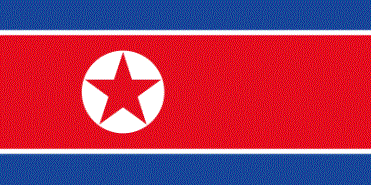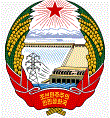South Hwanghae Province (Hwanghae-namdo)
The province is part of the Haeso region, and is bounded on the west by the Yellow Sea, on the north and east by North Hwanghae province. There are some administrative exclaves of Nampo City in the north of the province. The southern border of the province is marked by the Korean Demilitarized Zone with South Korea. The province draws its name from what were the largest cities in Hwanghae, Haeju and Hwangju; the name, which literally means "Yellow Sea" in Korean, also references the Yellow Sea, which forms the province's western bound.
The coastline of South Hwanghae is dotted by many small islands, many of which are uninhabited. Many of the largest islands, such as Baengnyeong-do are administered by South Korea. The Northern Limit Line, which runs through the region and demarcates a disputed maritime boundary between the north and south, is another frequent subject of contention between the two countries. The largest islands which indisputably belong to North Korea are Kirin-do, Changrin-do, and Sunwi-do.
The province, being not very mountainous, is uniquely suited to farming, and is thus often referred to as the "bread-basket" of North Korea. Much of the land is devoted to farming, and thus was not hit as hard as other parts of the country during the Arduous March of the 1990s. Many types of vegetables, fruits, grains, and rice are grown on the plains of the region; Kwail County, which means fruit in Korean, was founded to grow orchards.
Haeju, the provincial capital, is also the largest port in southern North Korea outside of Wonsan. The area is also home to several ancient burial mounds and cultural relics, such as the Kangsosa Buddhist temple, ancient stone pagodas, and a Koryo-era ice house. There are also many Iron Age dolmen and Koguryo tombs in the province, such as Anak Tomb No. 3.
Map - South Hwanghae Province (Hwanghae-namdo)
Map
Country - North_Korea
 |
 |
| Flag of North Korea | |
In 1910, Korea was annexed by the Empire of Japan. In 1945, after the Japanese surrender at the end of World War II, Korea was divided into two zones along the 38th parallel, with the north occupied by the Soviet Union and the south occupied by the United States. Negotiations on reunification failed, and in 1948, separate governments were formed: the socialist and Soviet-aligned Democratic People's Republic of Korea in the north, and the capitalist, Western-aligned Republic of Korea in the south. The Korean War began in 1950, with an invasion by North Korea, and lasted until 1953. The Korean Armistice Agreement brought about a ceasefire and established a demilitarized zone (DMZ), but no formal peace treaty has ever been signed.
Currency / Language
| ISO | Currency | Symbol | Significant figures |
|---|---|---|---|
| KPW | North Korean won | â‚© | 2 |
| ISO | Language |
|---|---|
| KO | Korean language |















